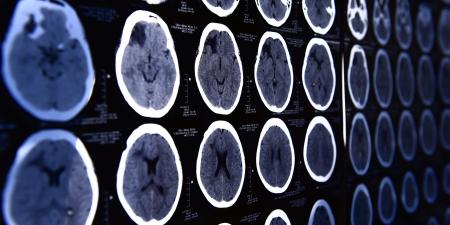Racine E, Shevell MI. Ethics in neonatal neurology: when is enough, enough? Pediatr Neurol. 2009; 40(3):147-155.
There have been tremendous advances in newborn care in the United States since the opening of the nation's first neonatal intensive care unit in 1960. These have led to improved survival of extremely premature newborns, many with complex medical and surgical needs [1]. Perception of what is acceptable in terms of neurologic handicap and its effect on quality of life has changed significantly since 1984, when the Baby Doe Amendment was signed into law [2]. In the post-Schiavo era, the roles of physicians, family, law, society, and government in end-of-life decision making have come under intense scrutiny and continue to evolve [3]. In “Ethics in Neonatal Neurology: When is Enough, Enough?” Eric Racine and Michael Shevell examine the ethical questions raised by the increasingly complex processes of prognostication and end-of-life decision making for newborns with severe neurologic insult [4].
The article focuses on newborns with severe injuries for whom an adverse neurologic outcome is highly probable. The authors start by defining the concept of futility, a label which is applied automatically in only two specific circumstances: anencephaly and brain death. Though in other situations, treatment is not considered necessarily futile, withdrawal of care may be considered when a severe adverse neurologic outcome is highly probable.
Racine and Shevell represent these clinical scenarios through two vignettes. The first one describes a 4-day-old boy with history of intrapartum asphyxia with apgars of 0, 0, 2, and 4 at minutes 1, 5, 10, and 20, respectively, and a cord pH of 6.88. He has seizures with multisystem involvement at 2 hours of age that are difficult to control. An EEG on the second day of life shows a burst suppression pattern. A head computed tomography scan shows diffuse edema, attenuation, and loss of grey-white matter differentiation with involvement of deep grey matter structures. Vignette two portrays a 21-day-old girl born second of twins at 27 weeks’ gestation. She has bilateral grade IV hemorrhages noted on cranial ultrasound at 7 days of life. On day 21 of life, her fontanel is noted to be full and a head computed tomography scan shows ventriculomegaly and cystic periventricular lesions. Although a severe adverse outcome is highly likely in both these cases and withdrawal of care may be considered, the authors emphasize that an outcome with relatively mild neurologic impairments cannot be completely ruled out. It is just not possible to prognosticate with accuracy.
After defining the circumstances in which withdrawal of care can be considered, the authors discuss ethical principles that come into play in these situations. Unique challenges are involved in end-of-life decision making for newborns, like inapplicability of respect for autonomy and the lack of advanced directives for proxy decision making. Parents are the obvious proxy decision-makers, but do not have unlimited authority, and their judgment may be questioned if medical personnel or others believe that parents are not acting in the best interests of the neonate’s current comfort and future development.
Most often, a mutually acceptable joint decision is made between the health care professionals and parents. On rare occasion, however, parents do not agree with the physicians. Such conflicts can often be resolved with the help of mediators and hospital ethics committees, but may occasionally lead to judicial proceedings.
The authors identify challenges other than disagreements about medical care between parents and caregivers. As has been documented in the literature, the approach of the caregivers can often be influenced by professional position, gender, age, length of experience, religiousness, and ethical perceptions of the relationship between withdrawal of care and euthanasia, among other things. They then discuss ethical issues in palliative care, explaining the difference between withdrawal of care and physician-assisted suicide or euthanasia, and the need for more training for medical professionals involved in end-of-life decision making and palliative care.
This is a remarkably well-written article that comprehensively covers the ethical issues involved in making care decisions for severely neurologically damaged newborns. One area in which the authors should have elaborated further, however, is the published statistical data about long-term outcome in these cases. The authors’ emphasis on the fact that accurate prognostication is impossible gives the reader an impression that this lack of certainty is the most critical information one can convey to the parents. The most crucial task for child neurologists and other physicians in these circumstances is to be aware of and counsel the parents as accurately as possible about future neurologic outcome based on published evidence.
References
- Cutler DM, Rosen AB, Vijan S. The value of medical spending in the United States, 1960-2000. N Engl J Med. 2006;355(9):920-927.
- Robertson JA. Extreme prematurity and parental rights after Baby Doe. Hastings Cent Rep. 2004;34(4):32-39.
- Cohen NH, Kummer HB. Ethics update: lessons learned from Terri Schiavo: the importance of health care proxies in clinical decision-making. Curr Opin Anaesthesiol. 2006;19(2):122-126.
-
Racine E, Shevell MI. Ethics in neonatal neurology: when is enough, enough? Pediatr Neurol. 2009; 40(3):147-155.



